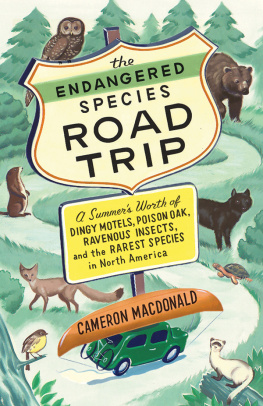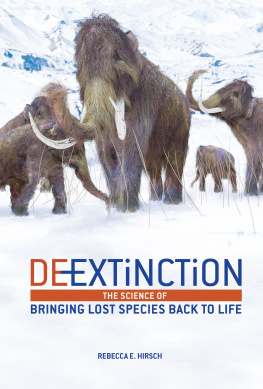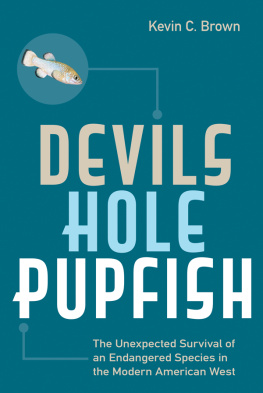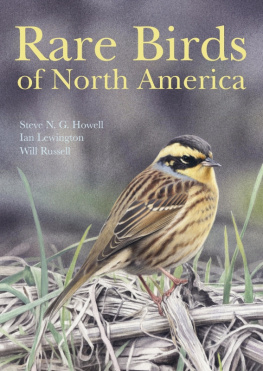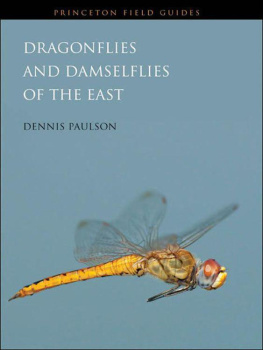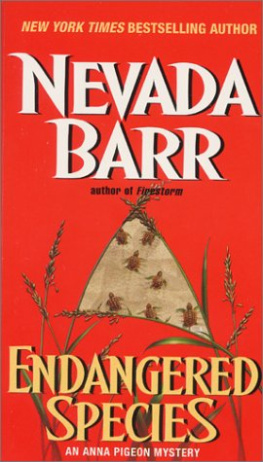ONE
where have
THE OWLS GONE?
To keep every cog and wheel is the first precaution of intelligent tinkering.
ALDO LEOPOLD, A Sand County Almanac
If the first day is indicative of the journey, its going to be one very long road trip. We leave on May 5, just as gasoline prices are peaking at around $1.40 per literthe line of credit is going to take a hell of a beating on this trip. Then, despite rising at 4 AM to pack the minivan, we leave two hours later than expectedit takes that long to stuff all of our junk into our newly acquired used minivan. Next, we spend two and a half hours waiting to cross the border into Washington State, the kids howling like coyotes the entire time. We eat a late lunch in a caf in Bellingham, less than forty miles south of our house. At this pace, I think to myself, well be on the road for the rest of our lives. Halfway through lunch, Brora, who is not yet two years old, has a food-tossing tantrum that causes every other patron to look our way. Leaving Briana with Finn, who is now seven months old, I carry Brora outside. It is pouring rain, real West Coast buckets.
We hit Seattle at rush hour and spend three hours screaming our way down the rain-slick I5 at four miles per hour. We get off in Olympia and start looking for a motel. Our intention is to camp most nights, but the rain is relentless. It turns out there is a conference in town, so it is seemingly impossible to find a pet-friendly motel with vacancies.
Finally, farther south on the I5, we find something within our budget. The room looks exactly like every other crappy motel roomfloral bedspread and overbleached sheets, someones stubble ringing the bathtub, and dark stains on the carpet (blood, I assume). The smell is a mixture of air freshener and pesticides, stale urine and damp mustiness. The room has only one saggy double bed, and it looks like it has seen more action than a D-Day beach. When it is time for bed, Briana and I each take an outside edge and the kids, who have surprisingly sharp elbows, take the middle. Adie, the pooch, reluctantly takes the floor.
I wake in the middle of the night and lie there listening to the rumble of the trucks on the I5, a river of consumption continually flowing north and south. I sit up and watch everyone sleeping in the neon glow of the motel sign. Briana is hanging halfway out of the crappy bed, the two kids are pressed to her back like leeches, and Adie is sleeping on her feet.
After a night of not sleeping, I get up before dawn and try to brew an in-room coffee, which is terriblealready I miss my burr grinder and exotic beans. Dumping out the coffee, I leash up the wiggling pooch for her morning stroll. Behind the motel is a scrubby patch of forest, and we sniff our way through it, tree to tree. According to Google Maps, we are exactly 189 miles south of our housewhy did it take us ten hours to get here?so it isnt surprising that the forest is very similar to the one we walk through at home, red alder, western red cedar, and Douglas-fir hogging the canopy.
The birds are also similarspotted towhee, black-capped chickadee, and song sparrowbut then I hear something new. A jay is calling, but its not the Stellers jay of my backyard; its a western scrub jay, a species that birders would describe as an accidental in British Columbia. Only a month before departing on the road trip, I found a western scrub jay in a Vancouver neighborhood, where it had been hanging out for the entire winter. But here, in Olympia, scrub jays are common enough that this mornings sighting doesnt justify a phone call to the local rare bird alert.
Twenty years ago, however, a scrub jay sighting in Olympia would have been perhaps as uncommon as Vancouver sightings are today. Like a number of species, scrub jays are currently expanding their range northward, primarily because of habitat modification as the dense temperate rain forest has been logged and replaced with the more open habitat that the scrub jays prefer. Climate change and backyard bird feeders are probably important factors also. Ive been thinking a lot about species ranges lately, why one species range might shrink to a dot and eventually disappear, whereas another species range expands to cover much of the continent. I imagine it wont be long before theres a breeding record for scrub jays in British Columbia, and when that happens, what will it mean from a conservation perspective? Will the province embrace its arrival or banish it as an unwanted exotic?
We spend our second day on the road trying to find our traveling pace. Drive for an hour, get out and run around, drive for an hour, stop for lunch, drive for an hour, get out and run around, drive for an hour, stop for the night. Today we manage 225 miles before the screaming forces us to stop in rainy Eugene, Oregon. I wake in the middle of the night and again lie there listening to the rumble of the trucks on the I5. Then I start thinking about northern spotted owls. Tomorrow, in Roseburg, Oregon, I hope to finally see one. Ive looked for one in British Columbia several times, but now they are impossible to find because only a few breeding pairs, at best, are left in the entire province. But in Oregon, the critically endangered owls are still numerous enough that my chances of seeing one are better, particularly because I was able to convince a local biologist to help. Finally, I fall back to sleep with visions of owls fluttering in my head.
I can tell Janice Reid, who has worked for the U.S. Forest Service for almost two decades, is a field biologist and not an armchair biologist by the way she walks through the forest. The undergrowth is dense, the forest floor is banana-slug slippery, and the slopes are West Coast steepand still she proceeds toward the spotted owl nest site without a lick of effort, following an unseen trail without the aid of GPS or compass, miraculously spotting feathers and owl pellets. I used to walk like that, I think to myself as I trundle along behind, gasping on the up slopes and falling on my arse on the way down.
Are you okay? Janice asks politely when I take my most obvious tumble.
Just checking out the undergrowth, I say, removing a stick impaled in my palm.
Watch out for the poison oak, she says. Its everywhere. Thank God Briana decided that she and the kids would enjoy spending the day wallowing in the motel pool more than chasing spotted owls through the temperate rain forest.
We are approximately ten miles west of Roseburg, Oregon, which is about two-thirds of the way down Oregon on the I5, and although we are now almost five hundred miles south of Vancouver, the habitat is still similarexcept for the poison oak. In Janices 4x4, we have driven through a series of rather nasty clear-cuts, climbing eventually into a remaining patch of mature forest. In this patch, there is a spotted owl nest that was still active the last time Janice checked on it a couple of weeks ago. But nests have been failing all across Oregon, probably because of the extremely wet spring that has gripped the whole coast.
Weve never seen anything quite like it, she says. Some years we monitor close to fifty nests in our study area, but this year weve only had four active nests. Its the same story everywhere in Oregon.
Janices pace slows as we approach the nest site. She points to an inconspicuous broken-topped Douglas-fir.
The nest is in the cavity at the top. Then she points to whitewash streaking a nearby tree. The male sometimes perches there.
While she circles around the nest tree, I hang back with my camera at the ready. When no owl appears after five minutes, she reaches into her backpack and pulls out a small cage with a few lab mice in it.
An enticement to help with the monitoring, she says, placing one squeaking mouse on a nearby brancha cotton ball ready for harvest.
We circle away, leaving the little mouse to its fate. Ten minutes pass, Janice clucks and hoots, and the mouse continues to scurry back and forth on its branch. Still no owls appear.
Next page
